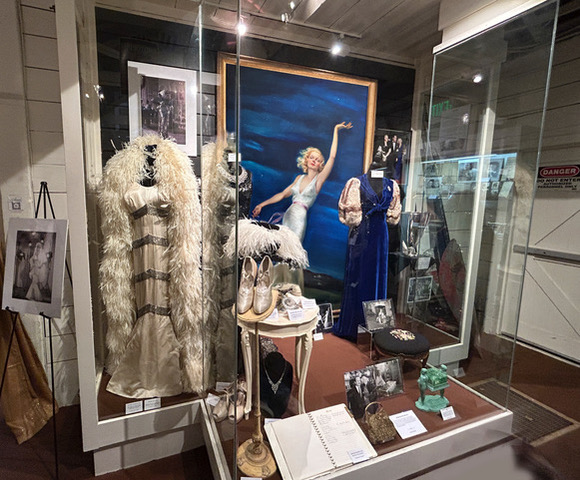One of Hollywood’s Most Significant Landmarks Still Stands
In a city where they think nothing of knocking down Pickfair, bulldozing the Garden of Allah and destroying the streamline moderne Pan Pacific Auditorium, it’s almost quaint that the most significant building in Hollywood history is a nondescript barn. With this column, I’ll be reminiscing about my life here since 1985, and I hope to reveal some fascinating insights about this magical place called Hollywood.
Be Mike Szy
I gave tours at the Barn for a good part of a decade in the 1990s. It ended up being a place where I became friends with people there who I still cherish to this day.
The odd history of the Barn is what drew me to being a docent there. And it was the main reason I bought a house just up the hill from it in historic Whitley Heights.
Many people mistakenly say the Barn is the oldest studio building in Los Angeles. No, it’s not.
But it is the place where Paramount Pictures began, and legendary filmmaker Cecil B. DeMille took it around with him almost like a lucky charm, because it is where he shot the first feature-length film in Los Angeles called “The Squaw Man.”
I always marveled that Hollywood Heritage recreated DeMille’s actual office at the Barn. A few items of DeMille’s are in the office, including his boots, which he slipped into and put his feet up on a wastepaper basket when they washed down the horse stables. (I loved telling that story, and when no one was in, I’d slip by the stanchion and sit at the desk to imagine what it was like back then.)
This Barn, you see, is why Hollywood exists here. DeMille was fleeing the unwieldy restrictions of filmmaking equipment patents by Thomas Edison. He was going to make his movie in Flagstaff, Arizona, but it was too rainy. So, he went to the end of the line, which was Hollywood.
He rented the Barn for $250 a month and made his movie — and even appeared as an extra as a card dealer — and it was the first hit movie made in Los Angeles. Made for $15 grand, it grossed more than $200,000.
When DeMille bought half of the land that was the Hollywood Cemetery (now Hollywood Forever) and created a studio, he moved his Barn to the lot with him.
DeMille felt sentimental about the old Barn, and it was used in countless movies and TV shows. It also became a research library and a gym — a favorite place for Steve McQueen to train. It lasted on the lot for more than half a century.
How it got to its present location is even more fascinating!
A $6.5 million movie museum was to be built in the lot across from the Hollywood Bowl, except an English Tudor home there was owned by Steven Anthony who refused to sell when the government evicted him through eminent domain.
He told the Los Angeles Times in 1964 with a shotgun and baby in his arms, “I’m not leaving. The minute anyone tried breaking in, they will be in for one hell of a surprise.”
A bartender at Barney’s Beanery, Anthony was fooled by two fellow bartenders who he invited in to watch the Academy Awards when Sidney Poitier was awarded Best Actor. It was a ruse. The guys brandished handcuffs, punched Anthony and 30 sheriff deputies stormed the house. By the time he was taken to jail, his belongings were taken out of the house and bulldozers demolished it.
The museum never got built, and in fact the money allocated to it somehow disappeared. When the Barn was finally placed in the spot, Anthony was satisfied with the outcome that the property was finally used as a museum but was bitter about being evicted “like in a communist country.”
So the Lasky-DeMille Barn that was built in 1901, finally settled after a big move to where it now sits in the Hollywood Bowl parking lot. DeMille and his partner Jesse Lasky are both buried at Hollywood Forever in the shadow of Paramount.
Now a California Historic Landmark, the distinctive porch can be seen as a train station in “The Rainmaker” and the TV series “Bonanza.”
In 1985, it opened as the Hollywood Heritage Museum with movie props, costumes such as Charlie Chaplin’s hat and cane, personal files, historic film equipment used by Buster Keaton, the headpiece of the Creature From the Black Lagoon, and hundreds of film industry items. It’s also used for unique screenings, lectures and displays.
I joined the docent team and was impressed with historians I met through there, such as Richard Adkins (who did a lot of hands-on work restoring the museum) and Steve Sylvester — both whom I admire greatly.
But my best experience at the Barn happened when a bright-eyed excited historian of her own, Rusty Frank, walked into the door. I told her everything I knew about the Barn and its artifacts, and we became instant friends.
Rusty is an authority on tap, Lindy Hop, swing and has an amazing story of her own that I’ll save for another column.
Who would have thought I’d find one of my prized treasures in a Barn?
You can reach Mike at mikeszy@aol.com.












